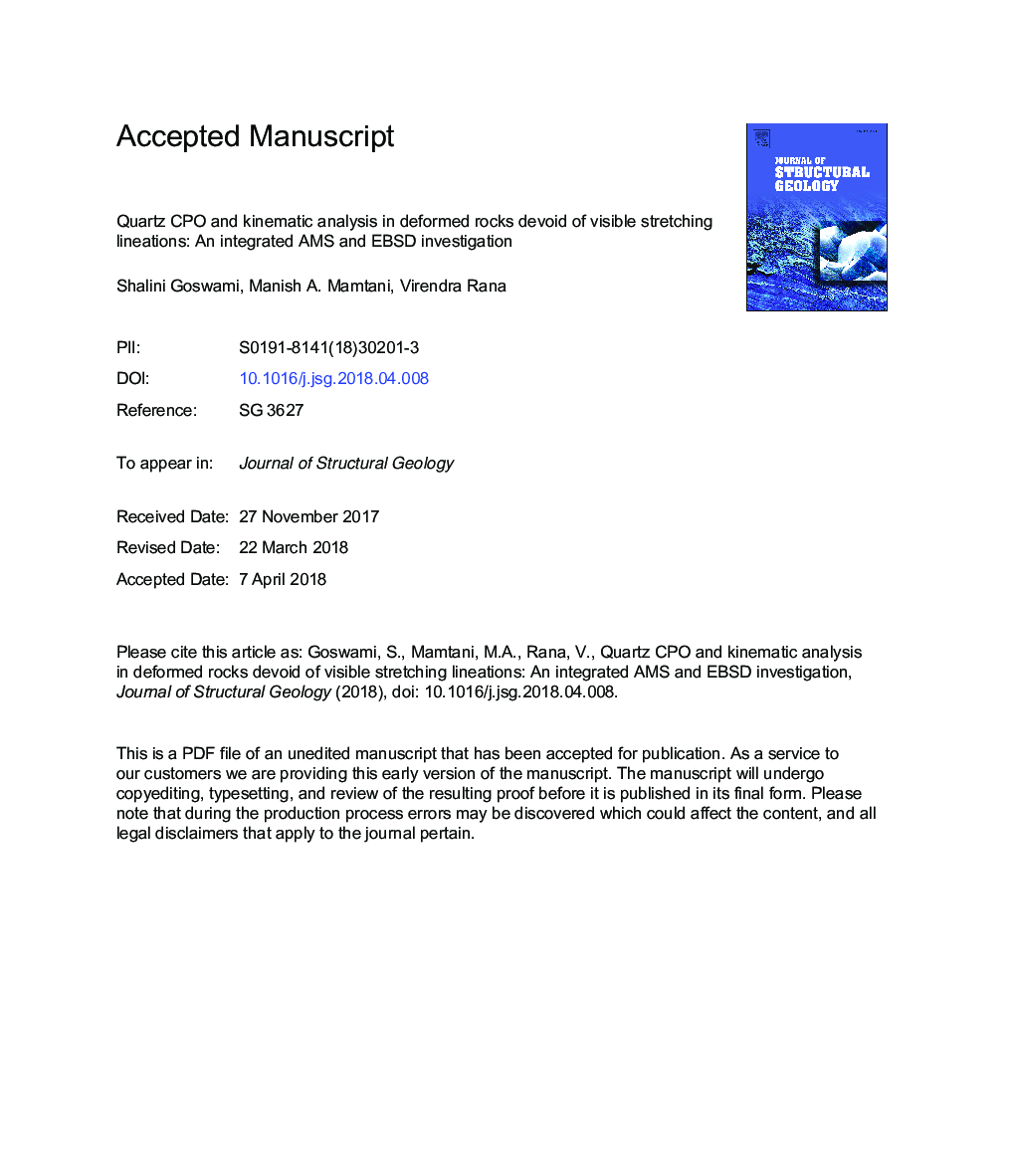| Article ID | Journal | Published Year | Pages | File Type |
|---|---|---|---|---|
| 10120753 | Journal of Structural Geology | 2018 | 42 Pages |
Abstract
Kinematic analysis of deformed rocks requires study of structures in a section parallel to the stretching lineation and perpendicular to the foliation, i.e., XZ section of the strain ellipsoid. However, presence of stretching lineation is more of an exception rather than a norm in naturally deformed rocks. This raises challenges for kinematic studies. In this study the authors advocate use of Anisotropy of Magnetic Susceptibility (AMS) to identify the three principal axes of AMS ellipsoid (K1>K2>K3), which are equated with principal axes of the strain ellipsoid (Xâ¯>â¯Yâ¯>â¯Z). This helps identify X direction of strain ellipsoid in deformed rocks that lack visible stretching lineations. It is proposed that a section prepared parallel to the K1K3 plane of a deformed rock can be treated as equivalent to XZ section of strain ellipsoid, thus making it possible to perform kinematic studies in a rock that did not have stretching lineation. Use of this method is demonstrated on massive metavolcanic rocks of Hutti region (Dharwar Craton, South India), which is replete with quartz veins that contain gold. Crystallographic Preferred Orientation (CPO) of quartz veins is measured using SEM-EBSD studies of thin sections prepared parallel to K1K3 plane of the host rock. Obtained data help recognize the presence of down-dip sense of movement as well as strain partitioning within veins, which are aspects that were not recognized in earlier studies. It is concluded that integration of AMS and SEM-EBSD studies will play an important role in kinematic studies in future.
Related Topics
Physical Sciences and Engineering
Earth and Planetary Sciences
Geology
Authors
Shalini Goswami, Manish A. Mamtani, Virendra Rana,
